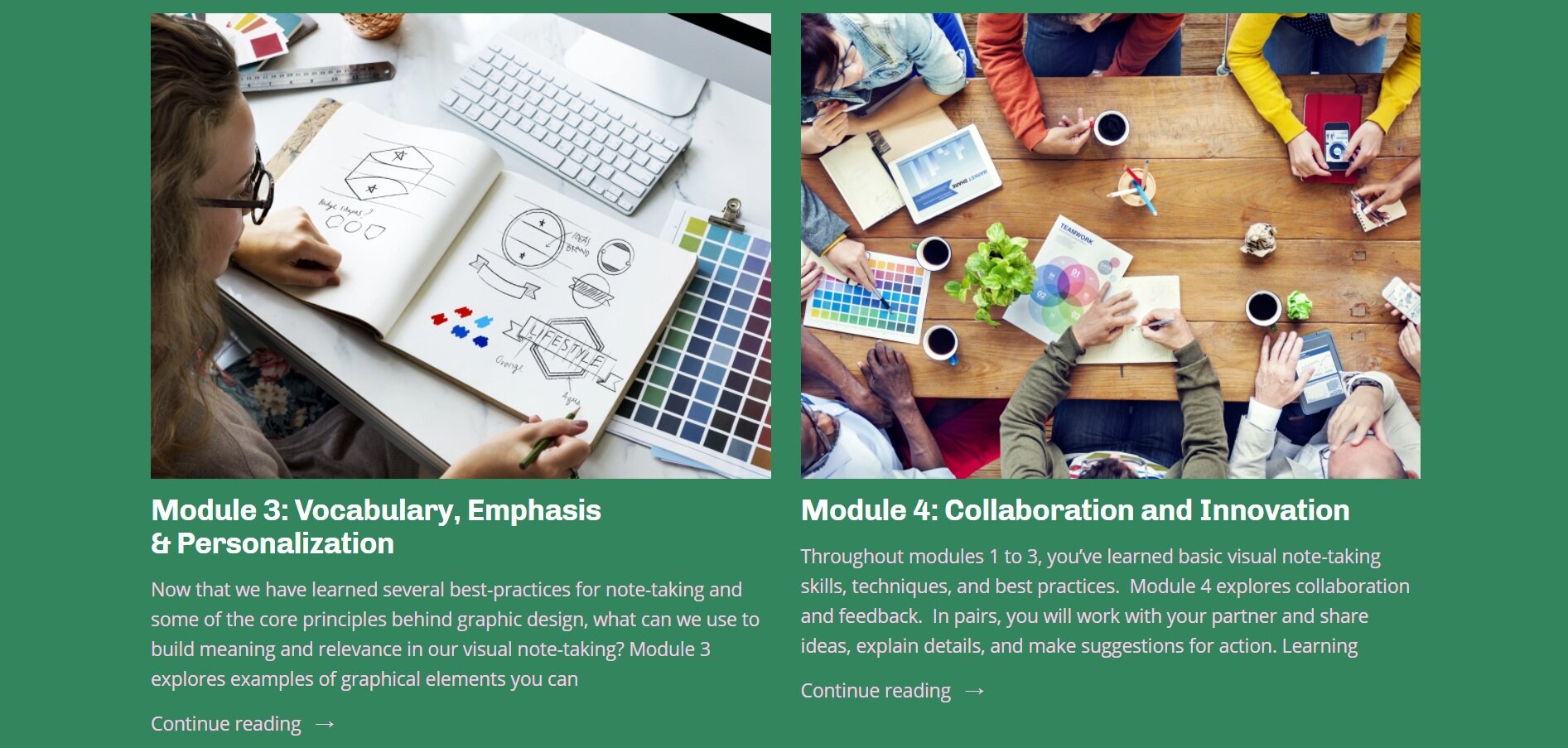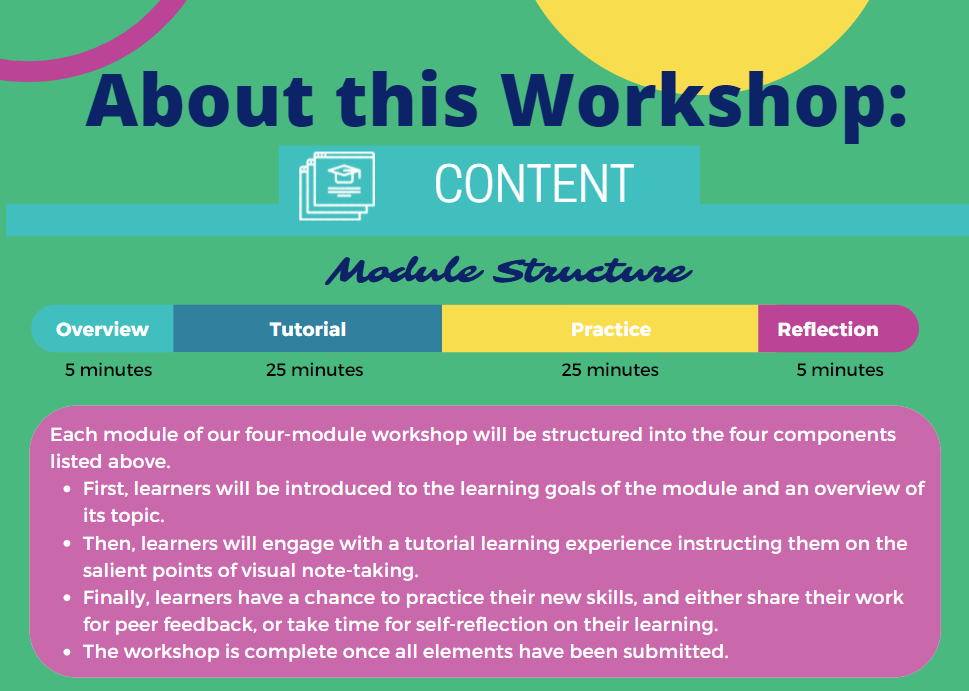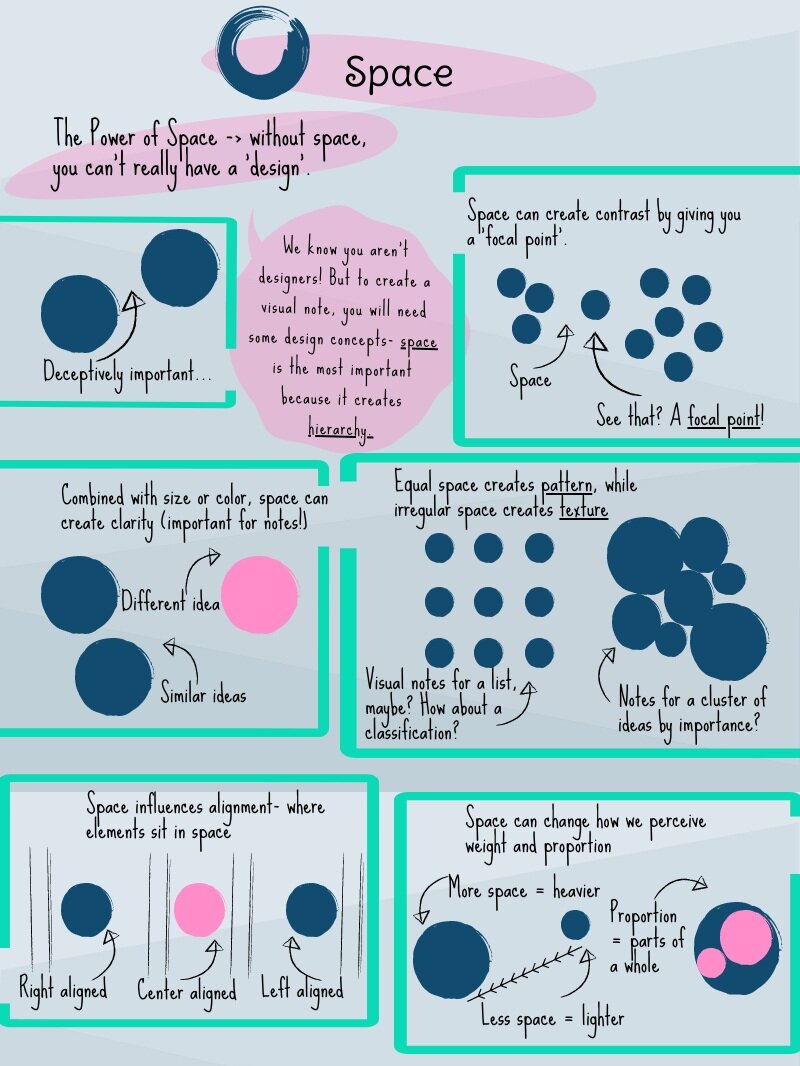
ETEC 510’s Final Design
The brief.
The design work we were asked to do in ETEC510 culminated into an end-of term assignment that gave us a chance to apply our learned to the selection, design, and application of a learning experience. Our idea was to create a visual note-taking workshop experience for first-year learners in higher education. This page describes the final workshop design while the previous page described our curriculum guide.
Visual notetaking.
Our final visual note-taking workshop design was a four-part workshop designed to help learners in their transition to post-secondary education by exploring visual note-taking and how it can be applied to their course notes. Each module scaffolded the learning and introduced students to concepts such as icons, space, color, and hierarchy. This idea is that learners use these skills after a lecture to visualize and synthesize the information in their notes.
Workshop overview.
Our workshop was broken down into four modules of one hour each. The workshop scaffolded the skills learners would need to know in order to create a visual note. Our idea was that a preparatory note-taking workshop that allowed learners to synthesize information with both visuals and text would support first year undergraduate learners in coping with the amount of information received in their university classes.
The modules.


Padlet.
The assets for each module are housed on WordPress, but the interactive components take place using Padlet. Padlet was chosen because of it’s ability to easily handle multimedia, collaboration between multiple people, and for how it organizes information. Since anyone facilitating the workshop would require their own Padlet account, we provided instructions where necessary on how best to use it with our content.
Multimedia.
To encourage and motivate learners, the workshop content was designed with multimedia in mind. Infographics and video instruction helped to demonstrate new content in a visual way. New concepts like space and hierarchy in graphic design were introduced in infographics first to clearly demonstrate the concepts. How each concept applies to note-taking was modeled in video media to guide learners through the visual note-taking process and what to think about while doing the workshop activity.
The takeaways.
This project was a real challenge in organizing a full learning design in a hypothetical situation such as a large scale university. I enjoyed having one more type of learning design under my belt and outside of my ordinary context. My biggest takeaways were those surrounding the implementation and maintenance of an online learning design.
First, we spent a long time considering who would facilitate the workshop given it took place outside of a classroom setting at a hypothetical large university. Typically, preparatory workshops of this nature are run through a university library or learning center but we felt this might require extra coordination and planning for this workshop. Therefore, this workshop is a self-contained experience that can be assigned by an instructor and facilitated with a minimum of time. Most of the activities are asynchronous and learner-facilitated.
Finally, to ensure a low maintenance design for the development team, we used a WordPress website to contain the materials. We were designing for a general university so a WordPress can be embedded into any Learning Management System.



